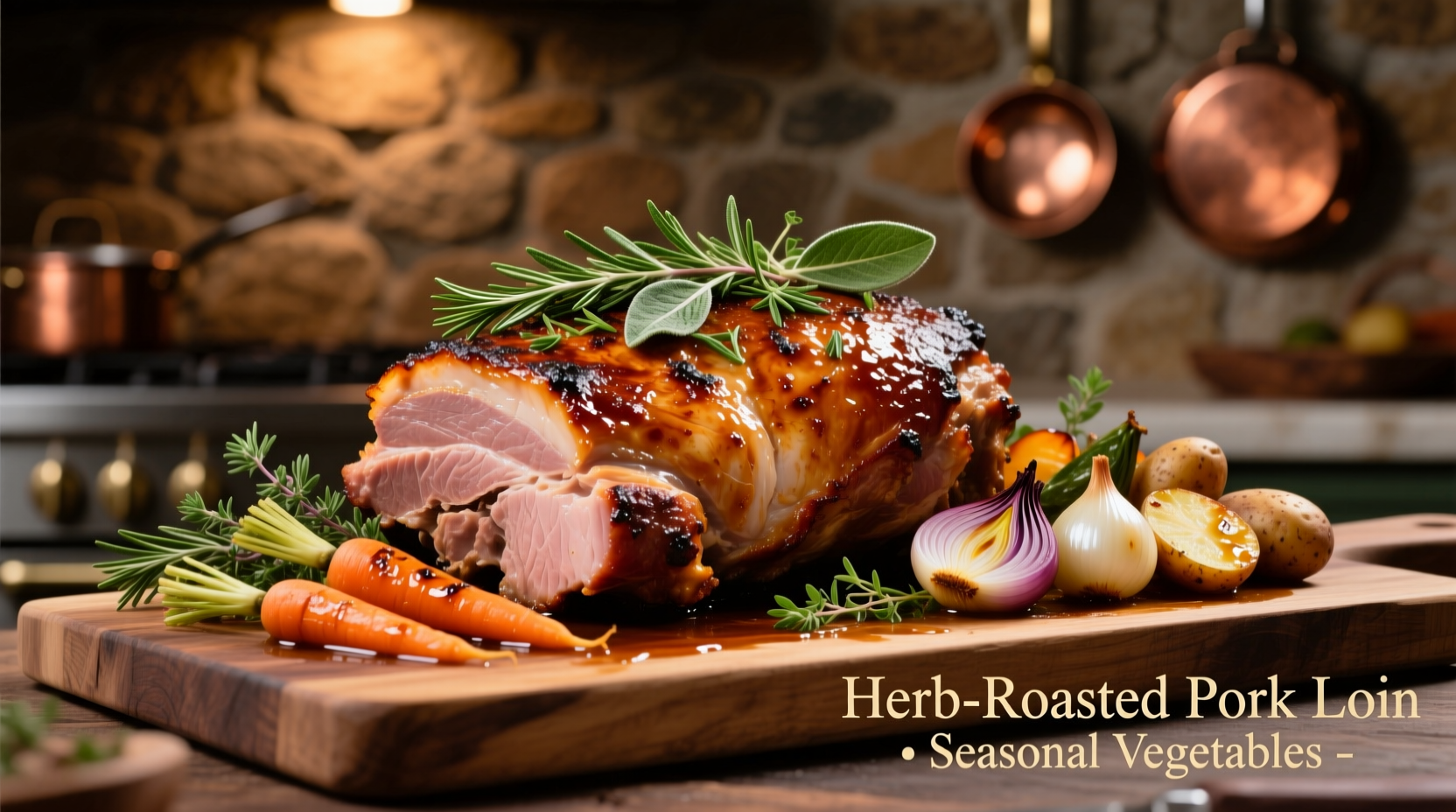For a 3-4 lb pork loin cooked at 375°F (190°C), roast for approximately 20-25 minutes per pound until internal temperature reaches 145°F (63°C), followed by a 3-minute rest. This ensures safe, juicy results every time.
The Perfect Oven-Roasted Pork Loin: Timing, Temperature & Technique
Nothing beats a perfectly cooked pork loin—tender, juicy, and bursting with flavor. But getting the timing right can be tricky. Cook it too long, and you'll end up with dry, tough meat. Too short, and you risk food safety issues. Let's break down exactly how long to cook pork loin in the oven for flawless results.
Why Timing Matters for Pork Loin
Pork loin is a lean cut that requires precise cooking to maintain moisture while reaching safe internal temperatures. Unlike fattier cuts like pork shoulder, there's little margin for error. The USDA's Food Safety and Inspection Service confirms that pork is safe to eat at 145°F with a 3-minute rest period, which allows residual heat to continue cooking the meat while preserving juiciness.
Your Step-by-Step Cooking Timeline
Preparation Phase (15 minutes)
Before your pork even hits the oven, proper preparation sets the stage for success:
- Dry the surface thoroughly with paper towels—this promotes better browning
- Season generously with salt, pepper, and your favorite herbs at least 45 minutes before cooking
- Bring to room temperature for 30-60 minutes before roasting for even cooking
Cooking Phase: Time and Temperature Guide
The golden rule: cook pork loin at 375°F (190°C) for 20-25 minutes per pound. But weight alone doesn't tell the whole story—your oven's actual temperature and the meat's starting temperature significantly impact results.
| Pork Loin Weight | Oven Temperature | Approximate Cooking Time | Target Internal Temp |
|---|---|---|---|
| 2-3 lbs (0.9-1.4 kg) | 375°F (190°C) | 40-60 minutes | 145°F (63°C) |
| 3-4 lbs (1.4-1.8 kg) | 375°F (190°C) | 60-85 minutes | 145°F (63°C) |
| 4-5 lbs (1.8-2.3 kg) | 375°F (190°C) | 80-110 minutes | 145°F (63°C) |
Note: These times are estimates. Always verify with a meat thermometer for accuracy.
Critical Food Safety Verification
The USDA's Food Safety and Inspection Service updated pork cooking guidelines in 2011, lowering the recommended safe temperature from 160°F to 145°F with a 3-minute rest period. This change, documented in their Safe Minimum Cooking Temperatures guide, was based on extensive research showing that 145°F provides equivalent pathogen destruction while preserving moisture and flavor.
The Essential Resting Period
Never skip the resting phase! After removing pork from the oven:
- Transfer to a cutting board and tent loosely with foil
- Allow to rest for 3-10 minutes (depending on size)
- Internal temperature will rise 5-10°F during this time
- Juices redistribute throughout the meat for maximum tenderness

Avoid These Common Timing Mistakes
Even experienced cooks make these timing errors:
Mistake #1: Relying Solely on Time Estimates
Oven calibration varies significantly. A study by the National Institute of Standards and Technology found home ovens can vary by as much as ±25°F from the set temperature. Always use an instant-read thermometer as your primary indicator of doneness.
Mistake #2: Not Accounting for Carryover Cooking
Remove pork from the oven when it reaches 140°F—5 degrees below target. The residual heat will continue cooking the meat during resting, bringing it to the perfect 145°F. This prevents overcooking, which begins at just 150°F.
Mistake #3: Ignoring Starting Temperature
Cold meat from the refrigerator takes significantly longer to cook than room-temperature meat. For consistent results, always let pork sit at room temperature for 30-60 minutes before roasting.
Pro Tips for Perfect Results Every Time
- Use a probe thermometer for hands-off monitoring—set the alarm for 140°F
- Sear first in a hot pan for better flavor development before oven roasting
- Try reverse searing for thicker cuts: cook at 275°F until 130°F internally, then sear at high heat
- Insert thermometer into the thickest part, avoiding bone or fat pockets
When to Adjust Standard Timing
Certain factors require timing adjustments:
- Frozen pork: Add 50% more cooking time (never cook frozen in a slow cooker)
- Stuffed loin: Add 15-25 minutes to accommodate the filling
- Convection oven: Reduce temperature by 25°F or cooking time by 25%
- High altitude (above 3,000 ft): Increase cooking time by 5-10% due to lower boiling point
Doneness Indicators Beyond Temperature
While a thermometer is essential, these visual cues confirm perfect doneness:
- Juices run clear, not pink
- Meat feels firm but yields slightly when pressed
- Internal color is pale pink (not red or gray)
Storage and Reheating Guidelines
Properly stored, cooked pork loin lasts 3-4 days in the refrigerator or up to 4 months frozen. When reheating:
- Refrigerated: 325°F oven for 15-20 minutes until 140°F internally
- Frozen: Thaw in refrigerator first, then reheat as above
- Never reheat above 140°F to prevent drying out
Final Timing Checklist
Before you start cooking, verify these critical points:
- Pork is properly trimmed of excess fat
- Oven is fully preheated (use an oven thermometer to verify)
- Meat thermometer is calibrated and ready
- Cooking time calculated based on actual weight
- Resting time accounted for in your meal timeline
Troubleshooting Common Issues
Encountering problems? These solutions address frequent timing challenges:
Dry, Overcooked Pork
Cause: Exceeding 145°F internal temperature or skipping the rest period
Solution: For future cooks, remove at 140°F and rest properly. Salvage dry pork by slicing thin and serving with pan juices or gravy.
Undercooked or Pink Center
Cause: Insufficient cooking time or inaccurate thermometer
Solution: Return to oven and continue cooking until 145°F. Verify thermometer accuracy by testing in ice water (32°F) or boiling water (212°F at sea level).











 浙公网安备
33010002000092号
浙公网安备
33010002000092号 浙B2-20120091-4
浙B2-20120091-4